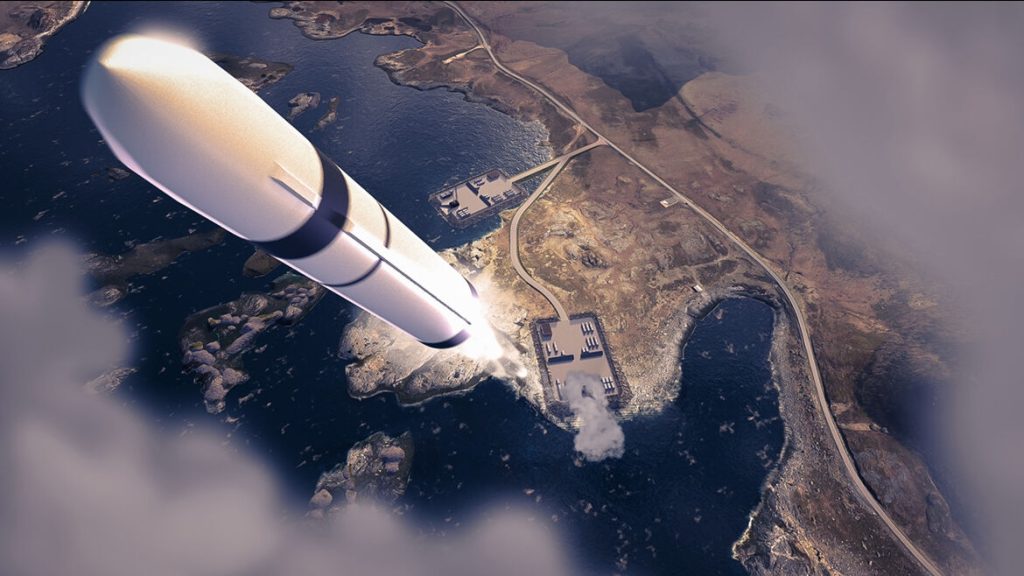Welcome to our in-depth analysis of Space Hub Sutherland, originally published January 24th, 2023 and most recently updated on May 20th, 2023. Make sure to check out our mission statement and why we do what we do. Look at our New Space guide if you want explanations of terms and concepts used in our research. And follow us on Twitter for updates.
What you should know about Space Hub Sutherland
📰 For space enthusiasts
- Sutherland Space Hub will be the second orbital spaceport in Scotland
- There will be a launch pad with control center for orbital rockets up to 20 meters in height
- 1 – 2 launches per year for first years, maximum 12 launches per year by 2030
- Located on mainland Scotland, construction started in 2023, with operational capability end of 2024 expected
💰 For VCs and industry experts
- Highlands and Islands Enterprises (HIE, governmental body) funded project with cost expectation of at least GBP 17 million
- GBP 2.5 million from the UK Space Agency, GBP 9.5 million from HIE, GBP 20 million expected privated investments
- Management and construction subleased to Orbex
- Signed launch agreement with Orbex
👨💻 For potential employees
- Up to 40 jobs on site expected over the next years, 250 in the region
- Jobs required will be commercial, launch and safety, operations and more
- All jobs will be on site in Scotland

The Sutherland Space Hub: A project to establish a spaceport
The Space Hub Sutherland is a government project by the HIE, Highlands and Islands Enterprise, to develop a launch site in northern Scotland. It is one of two spaceports being developed in Scotland, the other one being SaxaVord Spaceport.
The spaceport has a maximum capacity of up to 12 launches per year, expected sometime around 2030. It will launch orbital vehicles of the micro-class, with launch vehicles of up to 20 meters possible. So far, Orbex was contracted to oversee construction, manage the site, run the operations and launch its own vehicle, the Orbex Prime, from Sutherland.
The Sutherland Space Hub has been a project in development since around 2016. Initially, interest from the US aerospace corporate Lockheed Martin as well as the UK Space Agency’s initiative to establish a launch site on UK soil were driving reasons behind the program.
A history of the Space Hub Sutherland
Background on the Space Hub Sutherland
The location of the launch site in northern Scotland was scouted as early as 2016 by the HIE. The HIE, Highlands and Islands Enterprise, is a government agency with the goal of economic development in the Scottish highlands and islands.
In July 2018, the UK government officially announced funding for a consortium of space companies and projects to develop a national launch program. The consortium consisted of
- Orbex, a newspace company, who received GBP 5.5 million to develop a launcher,
- Lockheed Martin, who were awarded GBP 23.5 million, also to develop a launch vehicle, and
- HIE, who were granted GBP 2.5 million to build a spaceport in Sutherland.
HIE began planning the spaceport with the help of Orbex and Lockheed as their key partners, established a potential launch site in A’ Mhòine, and began drafting funding requirements. GBP 17.3 million would be needed to realize the infrastructure project.
The HIE established their proposal, went through committees and did their due diligence on the potential launch site. A non-public business plan was finally prepared in March 2020. In this time, however, Lockheed slowly pulled out of Sutherland and committed to the much larger project in SaxaVord in August 2020.
What didn’t help Sutherland either was local opposition, including a judicial objection by Wildland Ltd. in November 2020, a company belonging to Anders Holch Povlsen, a Danish billionaire and one of Scotland’s largest land-owners. Povlsen is, coincidentally, also the largest investor in the SaxaVord Spaceport through his Wild Ventures vehicle, supporting the project that will launch rockets far away from his own property. To give context, Povlsen, as well as other entities such as Scottish Natural Heritage, have been in opposition of the Sutherland site since at least 2018, so objections were expected. They were overruled in favor of Sutherland in July 2021, but it came with several planning conditions.
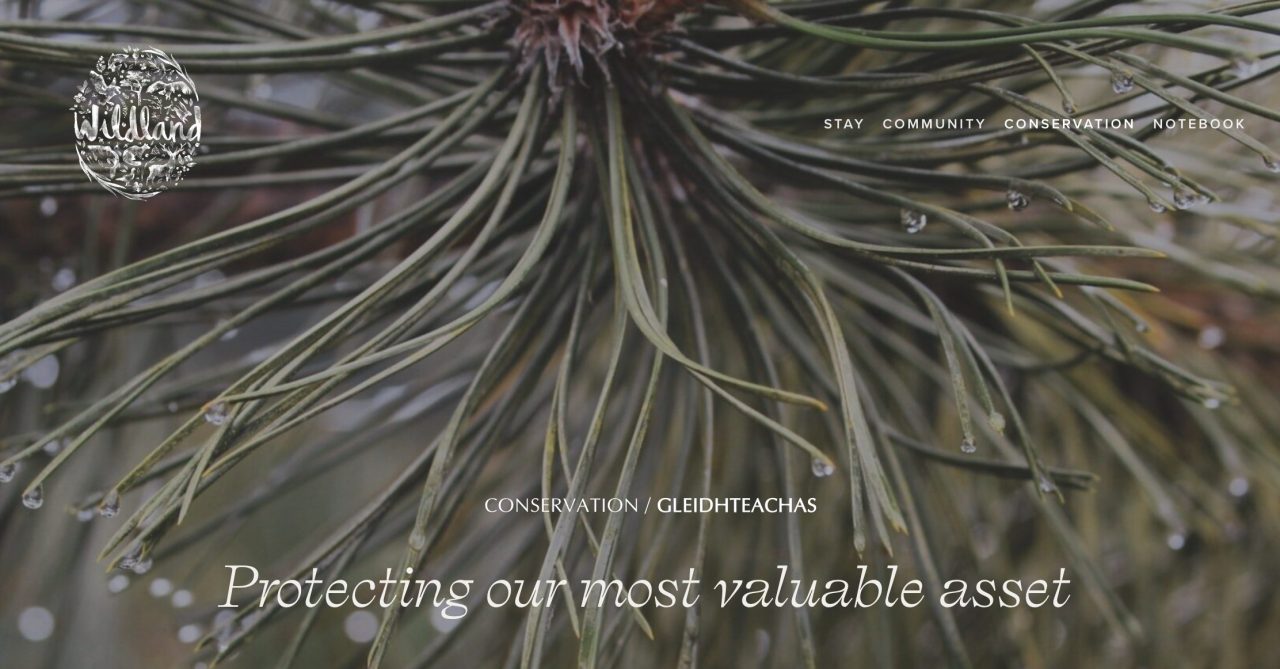
After around 15 months of silence, in November 2022, HIE appointed the only remaining potential launch partner, Orbex, as operator and manager of the launch port. Orbex will also oversee construction, which it will subcontract to Jacobs, a US-based engineering group, who is also an investor in Orbex. Construction on the site finally started in around March of 2023 and should take around 10 months, with further infrastructure installations taking up another half year to a year. Initial operational capability is now expected in the second half of 2024.
Space Hub Sutherland vs. SaxaVord Spaceport: Why are there two?

There is currently not a single active orbital spaceport in use in Europe, yet there are two under construction in Scotland. Why is this the case? To understand Sutherland, one has to understand the SaxaVord spaceport in the Shetland Islands. 3 key points to understand the history behind the battle for the best spaceport in the UK:
- History: The Sutherland project “came first” and got started several years before the Shetland spaceport. Using time as its advantage, it was able to receive the initial GBP 2.5 million in funding from the UKSA, basically establishing it as a fixture for HIE (the funding was about 3% of the HIE’s yearly budget at the time). SaxaVord, who also tried to apply, were basically “too late”, in the words of SaxaVord COO Scott Hammond.
- Location: Shetland Space Centre (now: SaxaVord) is much better positioned from a perspective of potential orbits, as shown in the SCEPTRE report. They also have much better (existing) infrastructure, due to the local oil & gas industry, as well as the military and airport installations on the island.
- Lockheed: The UK’s national pathfinder project was awarded to Lockheed. Lockheed has shown interest in Sutherland early on (and Sutherland was very keen to mention them as partner up until about late 2019), but moved to SaxaVord in August 2020. The reasons aren’t official, but apparently the launch site was too small for Lockheed. Having been awarded GBP 23.5 million from the government, Lockheed needed a small launch partner to execute. Government documents show that initially, Lockheed tried to use Rocket Lab as early as 2018 (Rocket Lab’s “Electron” rocket is only 18 meters), then potentially Firefly Aerospace, who were the benchmark for the SCEPTRE report, and then finally ABL with their RS1 rocket. The RS1 rocket, however, is too big for Sutherland.
Accessible orbits and launch corridor for launches from Sutherland (left) and SaxaVord (right)
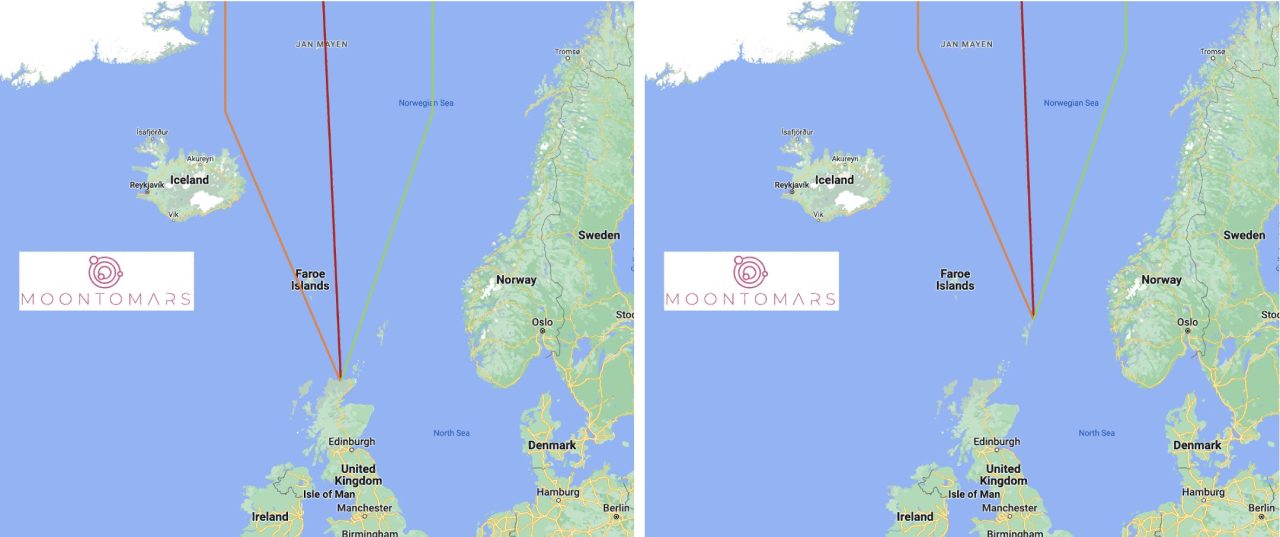
| Space Hub Sutherland | SaxaVord Spaceport | |
|---|---|---|
| History & Founding | First site-scouting in 2016 | Founded September 2017 |
| Launch location | Mainland Scotland | Shetland Islands, Scotland |
| Launch facilities | 1x launch pad at max. 500 kg payload | 3x launch pads at max 1,500 kg payload, satellite tracking station |
| Launch cadence | Maximum 12 per year | Maximum 30 per year (all pads combined); potentially up to 40 or 50 |
| Launch Partners | Orbex | RFA, Skyrora, Lockheed/ABL, HyImpulse, C6Launch, Astra and several others. |
| Funding required | Governmental, at least GBP 17.3 million | Private, GBP 25 million for initial operation, up to GBP 100 for max. capacity |
| Orbits | Polar, SSO. Risk areas include Faroe Islands, Shetland Oil Fields, Jan Mayen | Polar, SSO. Risk areas include Jan Mayen |
The Launch Site: What Sutherland plans to build
The location of the spaceport will be in A’ Mhòine in northern Scotland. The site itself will consist of three parts connected:
- Launch Pad Complex,
- Launch Site Integration Facility (LSIF),
- Launch Operations Control Centre (LOCC).
The three launch buildings will spread out over roughly 14 acres of land that is being leased by the local Melness Crofters Estate. The control centre and the actual launch site and integration facility will be connected by a yet to be build 2 km road.
The LOCC will be the primary building for operations and range control activities during launch. The front side will be made of glass for a direct view of the launch, while the site itself is set into the ground and covered by grass.
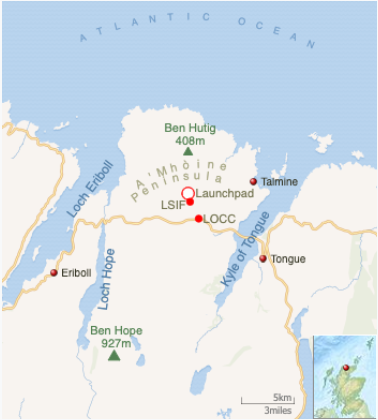
The LSIF is the main building for launch vehicle assembly and payload integration. It will be roughly 500 meters from the actual launch pad complex. The launch pad complex includes the pad, fuel and propellant storage as well as a lightning tower.
Images and layout of the Space Hub Sutherland
A side view of the launch site, showing the launch pad complex on the left as well as the launch site integration facility on the right-hand side.

A close-up view of the launch pad complex and locations of the pad, strong back and launch vehicle position, propellant storage as well as the access road to the pad.
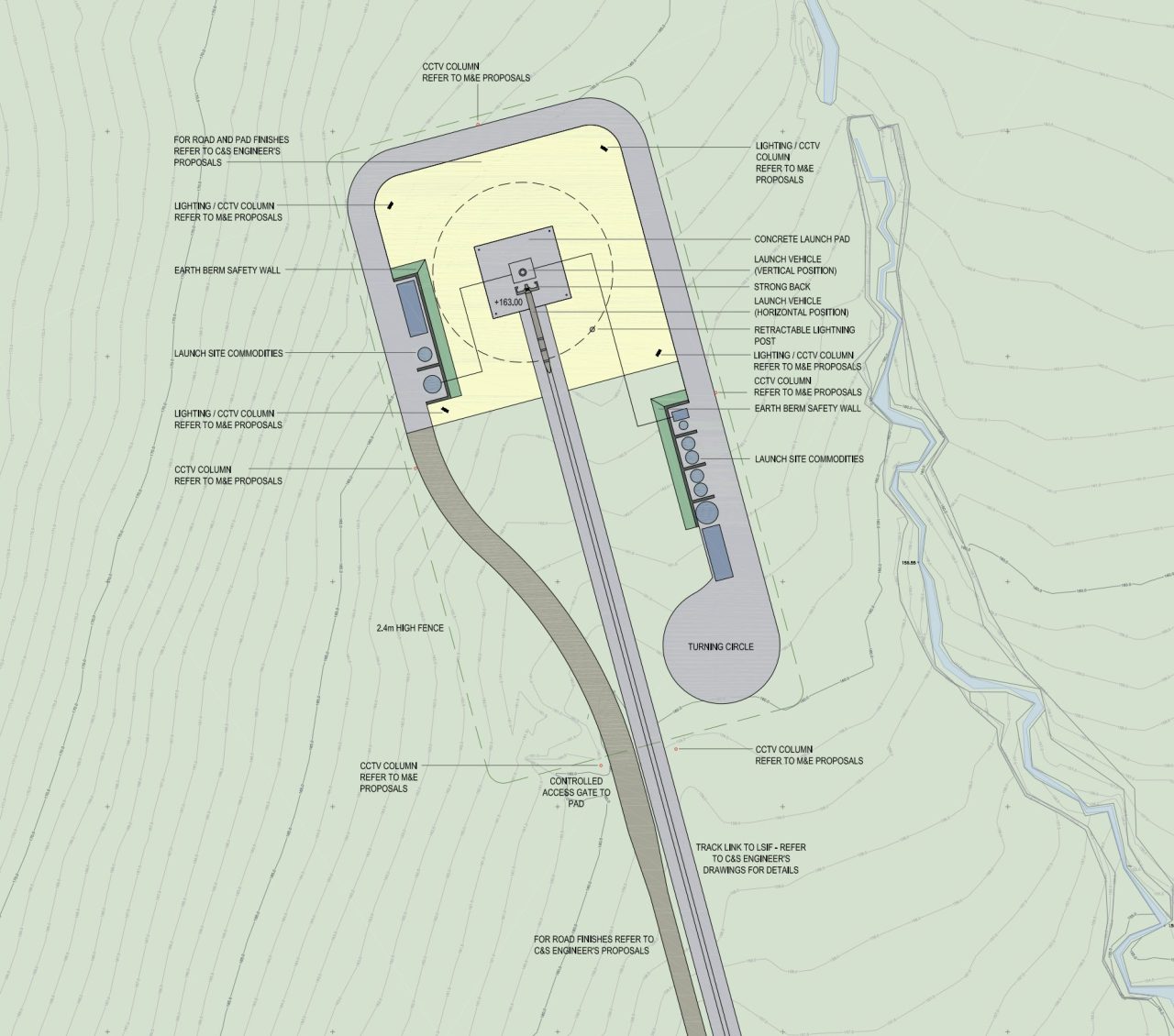
3d renderings of the launch facilities and the launch operations control center, which will be roughly 2 km south of the launch pad.
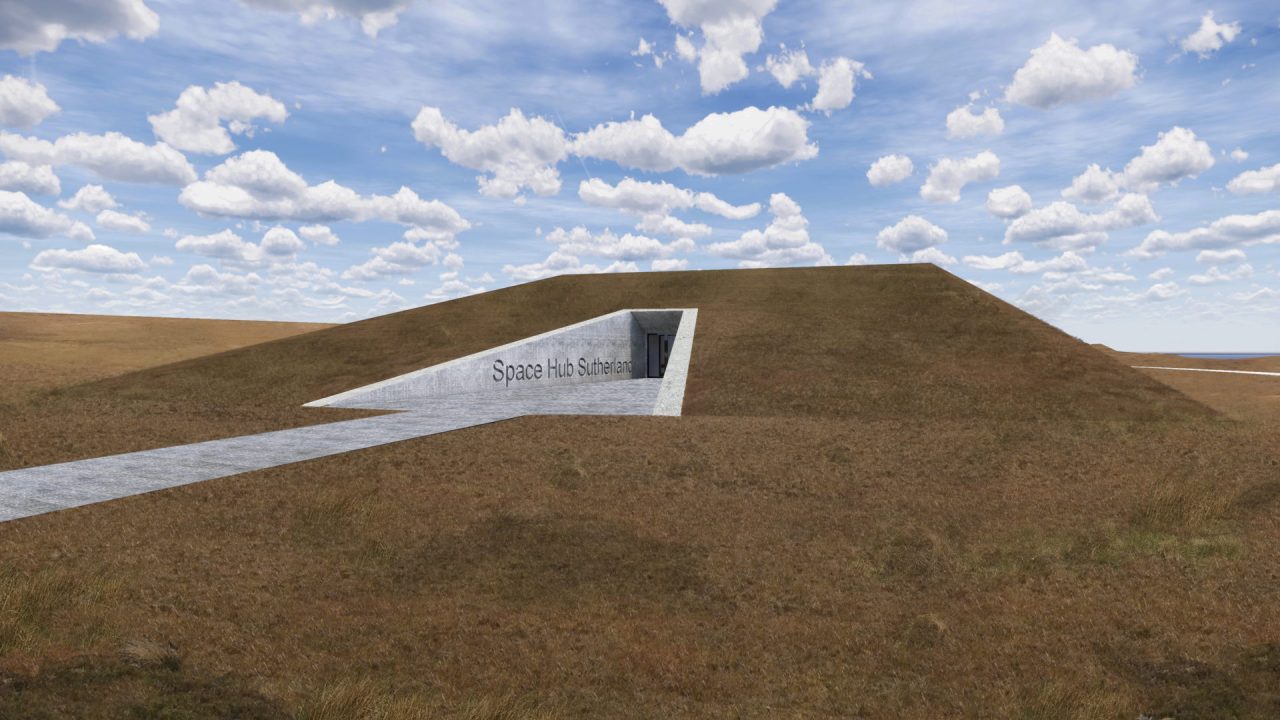
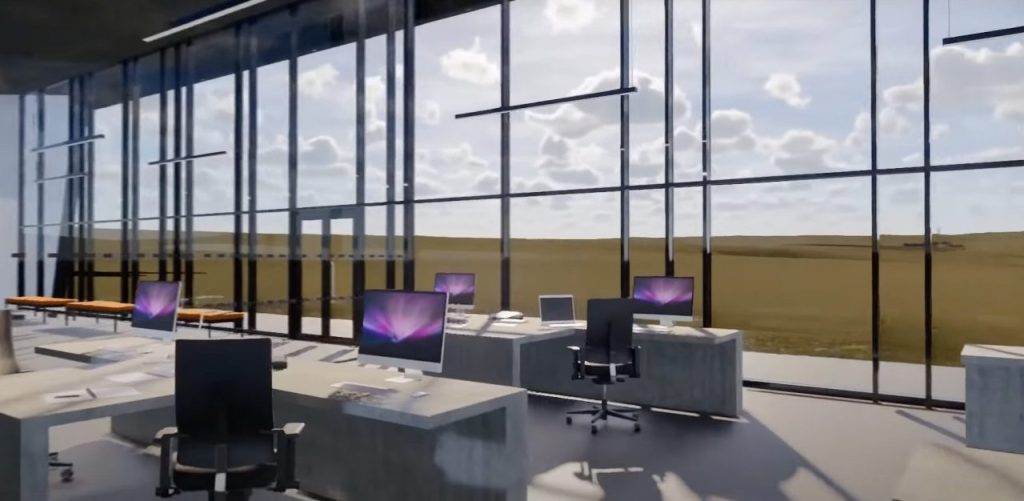
Strategy and financials behind Sutherland
Since the spaceport is a government project, the funding and finances are public, though one sometimes has to look closer on what is actually happening on the ground.
In 2018, the proposed cost of the construction project was estimated by the HIE at £17.3 million. In July 2018, the UK government, through the UK Space Agency, awarded the HIE with GBP 2.5 million. HIE took this money to develop the project further. An additional GBP 5 million was being requested from the Nuclear Decommissioning Agency (NDA) who haven’t given the official go ahead, but have “given HIE a clear indication of willingness to invest”, at least back in 2019. The NDA is involved because in the 2030s, the Dounreay Nuclear Power Development Establishment is set to enter its interim state, with significant job loss in engineering expected.
Up until November 2022, when Orbex was announced as official overseer and planner of the launch site, HIE was on the hook for the funding of £9.8 million. Now, Orbex has announced that they expect to invest about GBP 20 million of private investments into the project. This will come either directly, or through subcontracting with Orbex’s partner and investor, Jacobs.
An overview of funding and finances that have so far been confirmed
- £2.5 million granted from the UKSA (July 2021)
- £10 million committed from the HIE (as of November 2021)
- £20 million expected private investments in the future (November 2022)
Considering this has been a fully public project, it is nevertheless quite difficult to figure out the actual cost and investments by the parties involved so far.
Business and financials: A lot of guesswork and some question marks
Time for some back of the napkin calculations, how this spaceport could operate. From the economic impact touted, there will be “up to 40 jobs” created. We assume maximum capacity in 2030 with a ramp-up from 25 employees. We’ll assume £35,000 + 20% for personnel expenses on average. Considering the specialized nature of the jobs, the salary estimate is very conservative. We will add about £1,000,000 for yearly upkeep. Again, a number more on the lower boundary.
We could not find revenue or income projections in any of the reports. We assume that the only source of income will be the launches. We know that payloads are limited up to 500 kg. We also know that ramp-up will be slow, as stated by the HIE officials, with one launch in the first, maybe two in the second year, up to a maximum of 12 by 2030.
Going with the SCEPTRE report, ground-support costs launch providers between £300,000 – £500,000 per launch. We’ll go with £400,000 per launch for Sutherland. Putting everything together:
| Position / Year | 2023 | 2024 | 2025 | 2026 | 2027 | 2028 | 2029 | 2030 |
|---|---|---|---|---|---|---|---|---|
| COSTS | ||||||||
| Employees | 25 | 35 | 40 | 40 | 40 | 40 | 40 | 40 |
| Employee salary (35k) + 20% personnel costs | -£1.05 | -£1.47 | -£1.68 | -£1.68 | -£1.68 | -£1.68 | -£1.68 | -£1.68 |
| Cost of upkeep | -£0.50 | -£1.00 | -£1.00 | -£1.00 | -£1.00 | -£1.00 | -£1.00 | -£1.00 |
| REVENUE | ||||||||
| Launches per year | 1 | 2 | 4 | 6 | 8 | 10 | 12 | |
| Revenue | £0.40 | £0.80 | £1.60 | £2.40 | £3.20 | £4.00 | £5.00 | |
| Bottom Line Operations | -£1.55 | -£2.07 | -£1.88 | -£1.08 | £0.28 | £0.52 | £1.32 | £2.32 |
With an investment of around £30 million in total – 10 million from the UK government and 20 million from the private sector – we theoretically have a business case in which the project could turn a profit by 2027 and earn roundabout 2 million per year by 2030. That would amortize the initial investment after about 15 years. In our opinion: absolute best case scenario.
A few caveats:
- Looking at the finances, average salary and upkeep are probably understated, while pure revenue is overstated. More launches cost more money. Looking at financial records for Andøya Space Center in Norway, average cost per salary is around £100,000 per year, and upkeep much higher, even for a highly established sub-orbital launch base.
- In terms of risks, everything in Sutherland has to be built from scratch. All other European launch platforms have existing infrastructure or related industries: Andøya in Norway has been launching rockets since 1962. ESRANGE in Sweden has extensive test facilities used by RFA, Isar, Ariane and others for years. Even SaxaVord, building a brand-new range, has existing industrial and military infrastructure, a local airport and is already being used as a test site. Sutherland will be in the middle of nowhere, with no other purpose than as a launch site.
- Timeline: The first launch has been postponed from 2019 to 2020, to 2021, to 2022, to 2023 and – you guessed it, to 2024 now. A successful launch is closer to 2025. There’s also the issue that there’s an inherent lack of launch candidates, other than Orbex themselves, who have yet to prove that they are capable of reaching orbit.
My opinion on Space Hub Sutherland and why you should keep an eye on them
What I like about Space Hub Sutherland
- It’s something: Scotland will get another spaceport, which should bring more attention to the NewSpace economy overall. The concepts of the viewing and control room, almost fully laid into the ground, are quite pretty, too. This is also going to be the greenest spaceport in the world, which, considering size, funding amounts, time invested, is, well, like I said, it’s something.
What I don’t like about Space Hub Sutherland
- “Old Space”: 8 years and almost £10 million later, construction might start soon and rockets might launch next year. The development strategy, created by the very people responsible for making this happen, shows massive risks and inherent weaknesses compared to competitors. Neither aerospace infrastructure, nor large manufacturing hubs are closeby to access talent and resources. Unfortunately, this has a lot of the signs of an “old space” approach where plans and hopes do not follow numbers.
Things to keep an eye out for
- Orbex: The Sutherland spaceport is now basically an extension of Orbex. Everything that happens at Orbex will decide the fate of Sutherland. Orbex will need a launch license, and they will need a spaceport license. They will need a team for launches, and a team for the spaceport. Let’s just hope the Prime rocket works.
Closing words: The original history of Sutherland Space Hub
If you’ve made it this far into our analysis, we want to say thanks for sticking with us for so long with some pristine quotes from the HIE:
| Date | Actual Quote |
|---|---|
| December 2018 | “Currently we are revising our project programme to ensure we have captured all activities required to take this project forward in a timely manner” |
| June 2019 | “During a recent survey, our surveyor came across a ewe stuck in the ground with a new lamb nearby. The surveyor managed to get the ewe moving and she was reunited with her lamb. There appeared to be no harm to either ewe or lamb.” |
| December 2020 | “In the meantime, there are a number of planning conditions that we are taking forward and the preparations for the development works will be getting underway at the earliest opportunity.” |
| September 2021 | “You’ve got to remember, this is not rocket science that we’re trying to do.” |
| November 2021 | “It is a project that we are confident will wash its face.” |
| September 2022 | “Orbex Prime is the world’s most environmentally friendly space launch vehicle.” |
Let us see what the next years will bring for Sutherland. We will close our analysis with a quote from Scott Hammond, COO of SaxaVord spaceport:
“The infrastructure is quite simple. It is a concrete pad with a shed, effectively. The complicated bit is airspace, international agreements, regulation, safety analysis, et cetera. That is the complicated bit, and that is what takes up a lot of the time. Building a concrete pad is relatively simple.”
Scott Hammond
More information and further reading on Space Hub Sutherland
- Read the UK’s “Space Cluster Development Strategy” and their larger plans for Sutherland and the area
- Read the transcript of the Hearing on the UK Space Strategy, including testimonies from Pete Guthrie (Space Hub Sutherland), Scott Hammond (SaxaVord Spaceport), Melissa Thorpe (Spaceport Cornwall), as well as Dan Hart (Virgin Orbit) and others
| Type | Information |
|---|---|
| Official Company Name | Project by the HIE, Highlands and Islands Enterprise, UK Government |
| Management | Roy Kirk, David Howie, Pete Guthrie |
| Locations | |
| Headquarter | Tollemache House, Thurso, Caithness, KW14 8AZ, Scotland |
| Contact | |
| spacehubsutherland@hient.co.uk | |
| Website | https://hie.co.uk |
| Space Hub Sutherland Twitter |
Interested in more space companies? Read our other reviews and analysis
- Top 10 European Space Launch Companies 2024The European Space and Rocket Companies to watch out for in 2024 As we move into 2024, the landscape of space exploration and satellite deployment is increasingly dominated by a group of 10 European space launch companies. These startups and established companies are trying to push the boundaries of European-made… Read more: Top 10 European Space Launch Companies 2024
- 2024 Update on HyImpulse Tech🔥 Our 2024 HyImpulse update: Riddle me this – Launching from Australia The Germans plan a rocket launch. They need a spaceport. There are 2 freshly opened ports in Scandinavia. You have a contract with a third in the UK and a letter of intent with a fourth at home.… Read more: 2024 Update on HyImpulse Tech
- 2024 Update on PLD SpaceOur 2024 Update for PLD Space: The emperor has no clothes Company statements and balance sheets are a record of a management’s competence and truthfulness. Over the past decade, PLD’s management has proven deficient in both. Investment rounds, project schedules or launch capabilities: The history of PLD is marred by… Read more: 2024 Update on PLD Space
- PLD SpacePLD Space is a Spanish NewSpace company building the MIURA rockets. It was established in 2011 with the goal of providing the first commercial launch services for Spain and from Spain.
- Rocket Factory AugsburgRocket Factory Augsburg (RFA) is a new space company established in 2018. RFA is well funded and aims to beat competitors on cadence and pricing. The company plans to offer payloads of up to 1,300 kg at a cost of $3,000 to $4,000 per kg.




